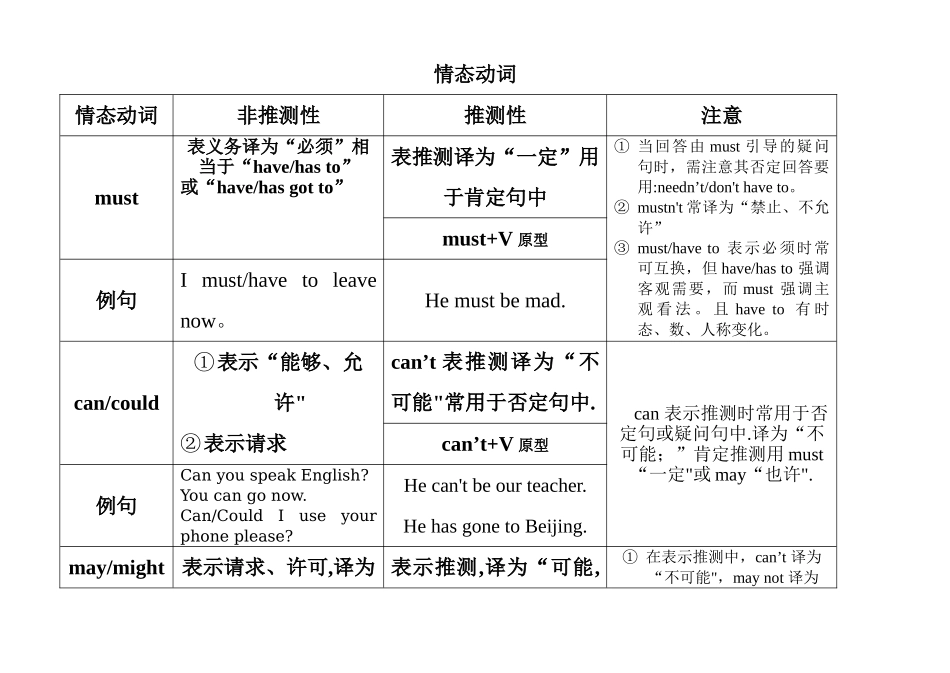情态动词情态动词非推测性推测性注意must表义务译为“必须”相当于“have/has to”或“have/has got to”表推测译为“一定”用于肯定句中① 当回答由 must 引导的疑问句时,需注意其否定回答要用:needn’t/don't have to。② mustn't 常译为“禁止、不允许”③ must/have to 表示必须时常可互换,但 have/has to 强调客观需要,而 must 强调主观 看 法 。 且 have to 有 时态、数、人称变化。must+V 原型例句I must/have to leave now。He must be mad.can/could①表示“能够、允许"②表示请求can’t 表推测译为“不可能"常用于否定句中.can 表示推测时常用于否定句或疑问句中.译为“不可能;”肯定推测用 must “一定"或 may“也许".can’t+V 原型例句Can you speak English?You can go now.Can/Could I use your phone please?He can't be our teacher.He has gone to Beijing.may/might表示请求、许可,译为 表示推测,译为“可能,① 在表示推测中,can’t 译为“不可能",may not 译为“可以"相当于 can也许”“可能不”.can’t 比 may not语气更强。② can 表推测常用语否定和疑问句中。may 常用于肯定句中。③ could、might、would 等情态动词不表示过去,而表示一种委婉语气。may/might+ V 原型例句MayI come in?May/Might I use your phone please?He may/might telephoned last night,but I’m not sure.will/would表示意愿表示请求在表示请求时,would比 will 更委婉。例句I will never talk to him again.Will/Would let me use your phone please?确定性的程度might<may<could<can<would<will<must

